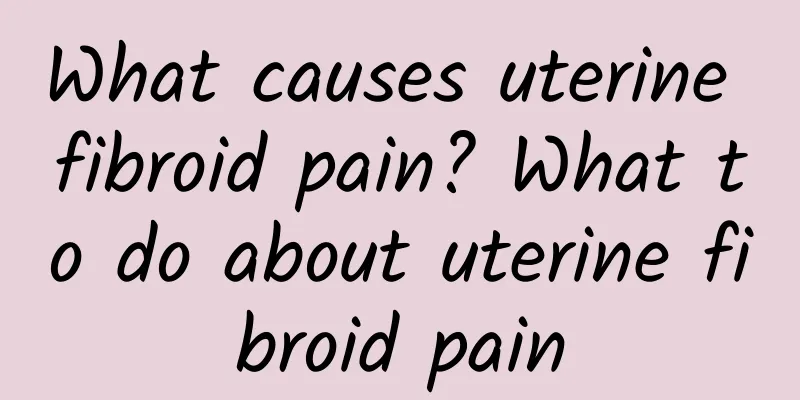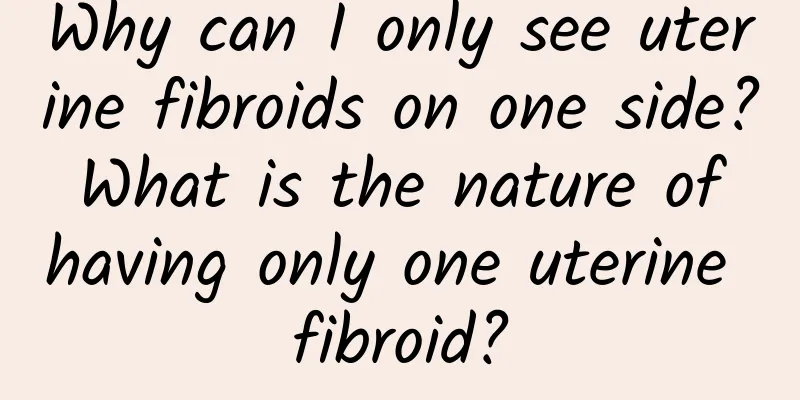What causes uterine fibroid pain? What to do about uterine fibroid pain

|
What causes uterine fibroid pain? What to do about uterine fibroid pain Uterine fibroids are one of the most common gynecological diseases in many women. They refer to a benign tumor in the smooth muscle of the uterus. About one-third of women with uterine fibroids experience pain. So, what causes the pain of uterine fibroids? And how to deal with this pain? One of the main reasons for pain from uterine fibroids is pressure caused by the enlargement of the fibroids. Uterine fibroids grow inside the uterus and gradually increase in size over time. As the fibroids grow, they put pressure on the surrounding tissues and organs, causing pain. This pain is usually in the form of a dull ache or pain that can be felt in the abdomen, pelvis, or lower abdomen. Uterine fibroids can also cause irregular menstruation and dysmenorrhea. Irregular menstruation refers to longer or shorter menstrual cycles, or even irregular labor pains. Dysmenorrhea refers to abdominal pain or uterine discomfort during or before menstruation. This pain is usually caused by bleeding or rupture of fibroids in the uterus, which stimulates the nerves attached to the uterine wall. Uterine fibroids may also cause other complex pain symptoms. For example, when uterine fibroids are located in the buttocks, they may cause buttocks pain; if the fibroids are located in the nearby spine or pelvis, they may also cause low back pain, back pain, pelvic pain and other symptoms. So, how do you deal with uterine fibroid pain? Here are some suggestions: 1. Seek medical help. If you suspect that you have pain caused by uterine fibroids, it is recommended that you consult a doctor for diagnosis. The doctor can confirm the diagnosis through examination, ultrasound and other methods, and develop an appropriate treatment plan. 2. Get treatment. Once uterine fibroids are diagnosed, your doctor will develop a treatment plan based on the size, number, and location of the fibroids, as well as your age and fertility plans. The goal of treatment is usually to relieve pain, reduce the size of the fibroids, or prevent further growth. Treatment methods include observation, medication, and surgery. 3. Use self-pain management methods. In addition to receiving medical treatment, you can also use some self-pain management methods to relieve the pain caused by uterine fibroids. For example, using hot or cold compresses can relieve pain and reduce inflammation caused by fibroids. Relaxation techniques, such as deep breathing and soaking in a warm bath, can also help soothe pain. Causes of pain from uterine fibroids include compression from enlarging fibroids, irregular and painful periods, and other complex pain symptoms. To deal with pain, we should seek medical help, receive treatment, and adopt self-pain management methods. I hope these suggestions will be helpful to women with uterine fibroids. |
<<: What is a giant uterine leiomyoma? How big is the largest uterine leiomyoma?
>>: What are the 4 signs of uterine fibroids? What are the symptoms of uterine fibroids?
Recommend
Beautiful nutritionist teaches you how to eat without gaining weight in winter! Hotpot, midnight snack, dessert, smart eating
[Key Points Introduction]: When it’s cold, your a...
How to take drospirenone ethinyl estradiol tablets after abortion
Artificial abortion is abortion. After an artific...
Does right ovarian cyst cause back pain? What are the clinical symptoms?
Right ovarian cyst and low back pain, what are th...
What are the symptoms of endometrial tuberculosis?
Endometrial tuberculosis is a serious disease. Ma...
Consensus on the diagnosis and treatment of hyperprolactinemia
Hyperprolactinemia refers to a syndrome caused by...
How to eat after pregnancy with uterine fibroids
If you are diagnosed with uterine fibroids during...
What are the clinical symptoms of cervicitis?
Summer is the peak season for female cervicitis. ...
What medicine is good for ovarian cysts? Can I get pregnant?
What medicine is good for ovarian cysts? Can I ge...
What are the 4 signs of uterine fibroids? What are the symptoms of uterine fibroids?
What are the 4 signs of uterine fibroids? What ar...
Abnormal vaginal discharge after excessive exercise
Abnormal vaginal discharge after excessive exerci...
Comparison of medical and painless abortion methods
Do you know about medication and painless abortio...
What should I not eat after having my uterine fibroids removed? What should I not eat after having my uterine fibroids removed?
What can't you eat after having a uterine fib...
What medicine should I take to treat amenorrhea for three months?
What medicine should I take to regulate my amenor...
Precautions after using Lipu knife to treat cervical erosion
For patients with cervical erosion that is deep, ...
What are the nursing matters for dysmenorrhea?
Dysmenorrhea is one of the common diseases of wom...
![[Video version] Give your liver a refreshing boost! 2 essential fat-reducing teas to eliminate fatty liver](/upload/images/67dcf92f12be7.webp)








